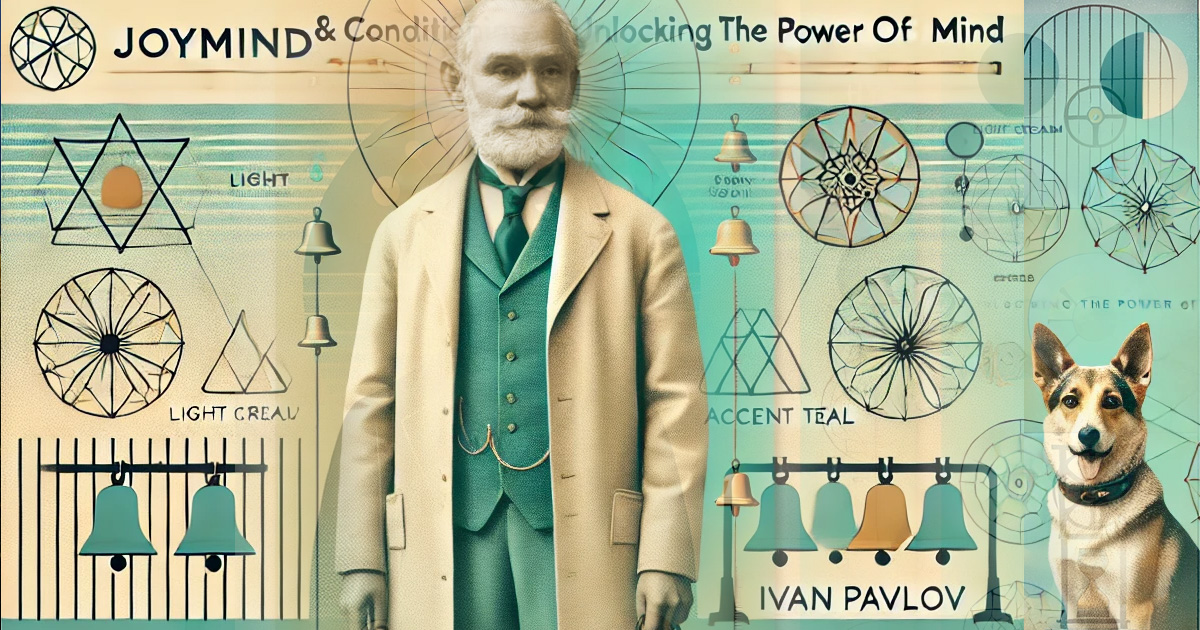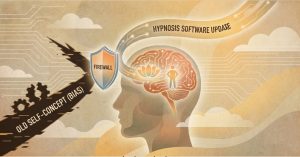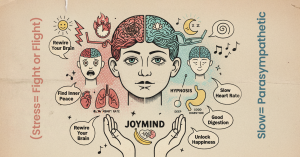Have you ever felt a bit skeptical about hypnosis?
You’re not alone. Many people have questions, concerns, and doubts about something that sounds a bit like magic. Yet, much of modern hypnotherapy rests on well-documented science, partly inspired by the groundbreaking work of Dr. Ivan Pavlov. In this article, we’ll explore how classical conditioning paved the way for modern hypnosis, how hypnotherapy really works, and why science increasingly supports its effectiveness. By the end, you might just find yourself looking at hypnotherapy in a new, friendlier light.
The Curious Start: Pavlov and the Power of Conditioning
In the early 1900s, Dr. Ivan Pavlov, a Russian physiologist, conducted a series of now-famous experiments with dogs. He noticed that when dogs were repeatedly exposed to a specific stimulus (like a bell) before receiving food, they started salivating upon hearing the bell alone. This discovery—which became known as classical conditioning—revealed how our brains can learn to pair unrelated stimuli with specific responses. Essentially, if something pleasant or unpleasant happens regularly in connection with a particular trigger, our bodies and minds begin to respond automatically to that trigger, whether or not the original event occurs.
Why is that relevant to hypnosis? Well, think of hypnosis as guiding the mind into a more relaxed and focused state—a mental “bell,” if you will. By creating a calm yet attentive mindset, hypnotherapy leverages something similar to Pavlov’s conditioning. Through repeated suggestions or visualizations, clients’ brains learn to associate certain triggers (say, counting backward or listening to a calming voice) with a desired mental state. This capacity for the mind to “retrain” itself owes a lot to the same principles Pavlov discovered.
Hypnotherapy: Beyond the Stereotypes
Let’s address the elephant in the room: many people envision hypnosis as a stage performer waving a pocket watch, intoning, “You are getting sleeeepy,” and then making volunteers act like chickens. While entertaining, that caricature is light-years away from real hypnotherapy. Modern hypnotherapy is a collaborative process in which a trained Hypnotherapist guides someone into a state of deep relaxation and focused attention. During this process, the client remains fully aware of what’s happening. There’s no magic; there’s a strategic harnessing of the mind’s ability to focus intensely and become more open to positive suggestions.
Consider the moments in everyday life when you slip into a “zone.” Perhaps you’ve found yourself totally immersed in a good book or a movie, barely noticing your surroundings. Or maybe you’ve driven home and suddenly realized you don’t remember the last few miles. These are examples of a natural trance-like state, something we all experience regularly. Hypnosis simply applies that state for therapeutic benefit. By building on Pavlov’s insight that stimuli can trigger specific responses, hypnosis employs focused suggestion to reshape old patterns, such as anxiety, unhelpful habits, or negative thought loops.
How It Works: The Science of Suggestibility
The term suggestibility often confuses people. It might sound like the mind is weak or gullible, but that’s not what it means in a therapeutic context. It actually refers to the mind’s capability to form new associations when in a more receptive state. In hypnosis, the person’s attention is directed inward. Think of it like putting the conscious mind in the passenger seat while letting the subconscious mind drive for a little while. The hypnotist doesn’t take control. Instead, they merely act as a guide, making helpful suggestions that the client can choose to accept or not.
This process rests on robust psychological and neurological foundations. Research in cognitive science has shown that when we enter a relaxed, focused state, our brainwaves shift, and our brain’s capacity for neuroplasticity—its ability to rewire itself—can increase (Spiegel & Spiegel, 2004). This means our minds become more flexible, more open to forming beneficial new patterns. Essentially, you can think of hypnosis as an efficient tool for deconditioning undesired responses (like stress to certain triggers) and reconditioning more positive or adaptive responses in their place.
A Brief Historical Journey
To understand how far hypnotherapy has come, it helps to look at some key figures in the field’s development. While Pavlov’s work laid the foundation for the concept of learned responses, other pioneers contributed to hypnosis specifically.
- Franz Anton Mesmer (18th Century): Often seen as the father of modern hypnosis, Mesmer believed in a mysterious “animal magnetism.” Though his theory turned out to be flawed, he kicked off scientific curiosity about the power of suggestion.
- James Braid (19th Century): A Scottish surgeon who coined the term “hypnotism.” He observed patients entering deep relaxation states and recognized the potential for therapeutic intervention.
- Sigmund Freud (Early 20th Century): Before developing psychoanalysis, Freud explored hypnosis as a way to uncover the subconscious. Though he eventually shifted his approach, he sparked lasting interest in hypnotherapy.
- Milton H. Erickson (20th Century): A psychiatrist and psychologist who was a master of clinical hypnosis. He used storytelling, metaphor, and indirect suggestion in ways that remain highly influential. Erickson’s approach showed that hypnosis could be gentle, respectful, and remarkably effective for various mental health needs.
These thinkers built upon each other’s work, slowly turning hypnosis from a mystical curiosity into a clinical practice. While each had unique theories, they all recognized the same truth: our minds can be guided toward positive changes through suggestions delivered in a relaxed, focused state.
The Science Backs It Up
Today, hypnotherapy is backed by growing scientific evidence. Studies have shown it can help with a range of issues, including chronic pain, anxiety, phobias, and even breaking bad habits such as smoking (Kirsch, 2011). The American Psychological Association (APA) and numerous professional organizations acknowledge hypnotherapy as a valid therapeutic method. Research using functional MRI scans indicates that hypnosis can alter the way our brains process information, providing stronger evidence that hypnosis isn’t just a parlor trick—it’s a genuine mind-body technique that helps reshape neural pathways (Lynn, Kirsch, & Hallquist, 2008).
As with all therapies, it’s not a one-size-fits-all solution. People vary in their “hypnotizability,” or how easily they enter a trance state. However, most studies find that the majority of people can benefit from some level of hypnotic experience if they are motivated and comfortable with the process. A person’s willingness is paramount; if you’re actively resisting hypnosis or determined not to be influenced, it’s unlikely to work effectively.
Skepticism Is Healthy
If you feel skeptical, that’s perfectly normal—and even good. It’s wise to question and understand any therapy before trying it. Hypnotherapy, like any other treatment, works best when you know what you’re getting into. Having a curious, open mind helps you discern genuine hypnotherapy from questionable practices. Plus, discussing your concerns with a qualified hypnotherapist can provide clarity and reassurance. A good therapist will welcome your questions and explain how the process might help your specific goals, whether that’s reducing anxiety, overcoming a fear, or simply improving your mindset.
It’s also worth remembering that reputable hypnotherapists adhere to ethics and guidelines much like other healthcare providers. They won’t promise outlandish miracles; they’ll work within a realistic framework of change, guided by established psychology and emerging neuroscience.
What to Expect in a Hypnotherapy Session
If you’ve never tried hypnotherapy, you might be wondering what actually happens. Though each therapist has their own style, here’s a general outline:
- Discussion: You and the therapist talk about your goals and any concerns. This is your chance to express skepticism, ask questions, and get comfortable.
- Relaxation Induction: The therapist guides you to relax through breathing exercises, calming imagery, or gradual muscle relaxation. This helps shift your attention inward.
- Deepening: Once relaxed, the therapist may use certain phrases or techniques to deepen your focus, further quieting your conscious mind.
- Suggestion/Imagery: Here, the therapist offers positive suggestions or imagery tailored to your goals. For instance, if you’re anxious about public speaking, they might help you visualize standing confidently before an audience, feeling calm and prepared.
- Reorientation: After the suggestion phase, the therapist gently guides you back to normal awareness. You’ll likely remember what happened and feel relaxed—some people even feel a burst of energy or clarity afterward.
Throughout the session, you remain aware of your surroundings. You can open your eyes, adjust your position, or speak if you need to. Contrary to popular myth, you are never “under someone else’s control.” Instead, you’re simply in a calm, suggestible state where your mind can focus on creating healthier neural pathways.
Practical Applications of Hypnotherapy
- Stress and Anxiety Management: Because hypnosis promotes relaxation, it’s often used to reduce stress and anxiety. By conditioning the mind to respond more calmly to everyday triggers, you can gradually build resilience.
- Pain Control: Chronic pain sufferers might find relief through hypnosis, as it can help alter the brain’s perception of pain signals. (King Michael et all., 2001).
- Habit Change: Bad habits (like smoking or nail-biting) or even unhealthy thought patterns can be tackled by pairing the desired change with the calm focus of hypnosis.
- Self-Esteem and Confidence: Hypnotherapy can reinforce positive self-images and beliefs, making it easier to approach challenges with confidence.
- Phobias: Whether it’s spiders or flying, phobias often respond well to hypnotherapy. By gradually desensitizing your mind to the feared object or situation in a safe, controlled environment, you can unlearn automatic fear responses.
Take the Next Step: Connect with Joymind Today
Feeling curious but still a bit unsure if hypnotherapy is for you? That’s completely normal. One of the best ways to address any remaining doubts is to talk with a program expert who understands both your skepticism and your potential goals. At Joymind, you can schedule a friendly call to explore whether hypnotherapy aligns with your needs.
Joymind’s team combines scientific knowledge with compassionate guidance, offering a customized experience rooted in evidence-based practices. By reaching out, you aren’t signing up for anything more than an informed conversation about how hypnotherapy—or related interventions—could help you move past stubborn habits, ease anxiety, or simply cultivate a healthier mindset.
Whether you’re looking to break a long-standing pattern or just curious about how hypnosis might make a difference in your life, a conversation with a Joymind specialist can be the first step toward unlocking that potential. They’ll walk you through the process, share real-life success stories, and address any questions you have. If you’re ready to explore how Pavlov’s enduring principles and modern neuroscientific insights could help you create meaningful change, visit Joymind to connect with a program expert today.
References
King Michael Nash, David Spiegel, Kenneth Jobson B., (2001). Hypnosis as an intervention in pain management: A brief review. International journal of psychiatry in clinical practice, 5(2), 97–101. https://pubmed.ncbi.nlm.nih.gov/24931782/
Kirsch I. (2011). The altered state issue: dead or alive?. The International journal of clinical and experimental hypnosis, 59(3), 350–362. https://pubmed.ncbi.nlm.nih.gov/21644125/
Lynn, S. J., Kirsch, I., & Hallquist, M. N. (2008). Social cognitive theories of hypnosis. In M. R. Nash & A. J. Barnier (Eds.), The Oxford Handbook of Hypnosis: Theory, Research, and Practice (pp. 111–140). Oxford University Press. https://amzn.to/41XQWCo
Spiegel, D., & Spiegel, H. (2004). Trance and treatment: Clinical uses of hypnosis (2nd ed.). American Psychiatric Publishing. https://www.amazon.com/Trance-Treatment-Clinical-Uses-Hypnosis/dp/1585621900
















